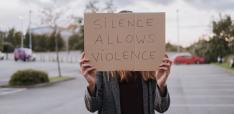Solving the Rohingya crisis could provide a new Refugee Repatriation Model

Ashfaq Zaman argues that we need a new refugee repatriation model: one that turns crises into opportunities, that binds states into accountability, and that restores dignity to those uprooted.
Refugee crises have become one of the 21st century’s many ‘new normals’. Displaced peoples are a growing symptom of a fracturing natural and political world.
Conditions are rapidly changing, yet the international community is failing to imagine a model that allows for dignified, consistent and sustainable repatriation for refugees. In the closing era of Western-led development, aid has operated as a bandage. Yet all too often, long-term repatriation solutions models have failed to materialise.
The lurch towards both populism and protectionism has fundamentally disrupted the traditional international aid model. We cannot rely on new pledges and parcels. Now is the time for new ideas.
As we approach the high-level meeting on the Rohingya crisis at the UN general assembly, it’s time to imagine how a globally applicable, yet locally adaptable repatriation model could work.
I believe that such a model should follow the principles of economic opportunity, truth and reconciliation, security guarantees, self-determination and deep contextual understanding.
The unresolved humanitarian crisis on Bangladesh’s border offers an opportune test case. More than a million stateless Rohingya remain trapped in the “temporary” camps of Cox’s Bazar in Bangladesh six years after they were driven from their homes in Myanmar’s Rakhine State. What was meant to be a short-term humanitarian response has ossified into a permanent state of purgatory for the Rohingya people.
In order to model a successful repatriation model for the Rohingya people, we must first understand why so many fail.
History is littered with repatriation efforts that faltered or even worsened instability. Common themes emerge through many of the different contexts.
The first comes from a failure to understand the local ethnic, religious or political context. Refugees are often asked to return to states, even when the conditions that drove them out initially remain unchanged. For example, Afghan refugees were repatriated from Pakistan in large numbers during the early 2000s, only to find a country still riven by conflict. Reports emerged undermining the notion that returning Afghans were returning voluntarily, with one report suggesting that 82% of Afghans did not want to return home. Contextual understanding and refugee self-determination are crucial components of any successful repatriation strategy.
Equally, safe return requires more than a ceasefire. It requires ongoing, guaranteed protection from persecution. Rwandan Hutu refugees who returned in the late 1990s faced harassment, arbitrary detention, and in some cases, killings. Without credible safety guarantees, voluntary return often becomes coerced return, which only exacerbates cultural tension, invariably delaying or preventing any feasible repatriation process.
Similarly, refugees cannot return home without any economic prospects. Refugees cannot reintegrate if they face unemployment, landlessness or poverty. In South Sudan, repeated waves of returnees after the 2005 peace agreement found little infrastructure or jobs. When civil war reignited in 2013, many were simply uprooted again. Investment and economic opportunity must become a prerequisite of any successful repatriation model.
Refugees also cannot return home when their homes no longer exist. Many often return to destroyed villages with no housing, schools, or clinics. In Bosnia, after the 1995 Dayton Accords, many returnees struggled to rebuild their homes without sufficient international support, leaving ethnic divisions entrenched.
The lesson is clear. Physical relocation is the bare minimum. It must be part of a broader political and economic settlement that ensures the agency, opportunity, safety, rights and health of the refugees.
If refugee crises are to be solved rather than simply managed, we need a framework that combines both prospects and penalties for states of return, while prioritizing the perspectives of the refugees themselves.
A new model should rest on four principles:
International guarantees of security must be secured. Independent monitors, mandated peacekeepers and regional security forces must oversee returns to prevent persecution. Protection of minority rights and freedom of movement should be non-negotiable.
Economic incentives and investment must be established before repatriation. States that agree to safe repatriation should receive development investments that build infrastructure, create jobs and attract international investment. This can help to make sure that repatriation is not viewed as a zero-sum game between returnees and their local communities.
Independent oversight and accountability must be assured. A standing international commission should monitor compliance, issue public progress reports, and trigger sanctions or incentives based on performance.
Reconciliation and justice mechanisms must be established. Truth commissions, restitution of land, and recognition of citizenship are essential for healing divisions and preventing cycles of revenge. This, again, underlines the importance of real contextual understanding along with the centering of refugee perspectives.
Humanitarian goodwill has proven itself fickle. Repatriation efforts must align with the strategic and economic interests of great regional powers. This way, so that they could see repatriation not as a burden but as a political and economic opportunity.
The collapse of international funding, following USAID’s implosion and the halving of food rations in Cox’s Bazar earlier this year, has underscored the fundamental unsustainability of aid. Stopgap relief cannot substitute for permanent political solutions. Wealthy nations can no longer outsource humanitarian responsibility to host countries like Bangladesh, who shoulder immense burdens with no resolutions in sight.
The case for a commission
A logical first step would be to establish a permanent international commission on Rohingya repatriation, bringing together all key stakeholders: the Rohingya themselves, Bangladesh, Myanmar, China, the United States, and the UNHCR.
This commission should not be another talk shop. It must agree on a legally binding timeline for repatriation. Equally, enforceable conditions of return must be guaranteed. These must include: freedom from persecution, freedom of religion, access to employment, citizenship rights, and guaranteed access for aid agencies.
Finally, these attempts must be subject to Independent monitoring, overseen by the UNHCR, or other regional observers.
The commission would need teeth. Sanctions or incentives should be linked to Myanmar’s compliance. At the same time, tangible economic benefits, such as lifting sanctions and new investments should be tied to progress.
Economic opportunity
To address the economic dimension, a demilitarised development corridor could be created in Rakhine State. This corridor, supported by international investment, would generate jobs for both Rohingya returnees and local populations, turning repatriation from a perceived burden into an opportunity. Multilateral development banks and China’s Belt and Road Initiative (BRI) could provide financing, while risk-sharing instruments such as political risk insurance could attract private investors.
Reconciliation and trust-building
A Truth and Reconciliation Commission, modelled on post-apartheid South Africa or Rwanda’s Gacaca courts, could provide a forum for community trust building. This would allow acknowledgment of atrocities, restitution of land and property, and the restoration of citizenship rights stripped by Myanmar’s 1982 nationality law.
Equally, the Rohingya people must be guaranteed citizenship. Currently stateless, the Rohingya people have been steadily stripped of their citizenship by the Myanmar authorities, culminating in the 1982 Citizenship law, whereby the Rohingya were not recognized as one of the 135 racial groups in Myanmar.
For full repatriation, this must be reversed. Historical records from British colonial history describe the Muslim communities well-established in the Rakhine region, alongside the Buddhist Arakense populations as far back as 1824. Prior to this steady legal erasure, the Rohingya had been fully recognised, voting members of Burmese society under the post-independence constitution.
Granting this citizenship would require a steady educational and community building process, along with concerted pressure from the international community. Recognition of the Rohingya’s citizenship is a complicated yet obligatory part of rebuilding their cultural identity and dignity. A Commission would have to ensure that this citizenship had been fully recognized before a repatriation process could take place.
Ultimately, this would require co-ordination and unity between great powers. This, in turn, relies on balancing their interests.
For China, stability in Rakhine is essential for its BRI projects, including the Kyaukphyu deep-sea port. For the United States, brokering a solution could demonstrate that diplomacy and deal-making can achieve more than perpetual aid spending. For Myanmar’s junta, engagement could provide a pathway out of pariah status, reducing sanctions and developing international legitimacy.
This is not naïve idealism. It is a recognition that only when all stakeholders see tangible gains will repatriation become politically feasible.
Guiding principles through uncertainty
If such a model could be forged for the Rohingya, it could serve as a template for other protracted refugee crises. For example;
South Sudan. More than two million South Sudanese remain displaced across Uganda, Kenya, Ethiopia and Sudan, alongside millions of internally displaced people. While peace agreements have been signed, intermittent violence, weak governance, and recurring food insecurity makes their return precarious.
Past repatriation efforts show the risks of premature return. Many refugees who went back after the 2005 Comprehensive Peace Agreement were uprooted again when fighting reignited in 2013. A commission-based model could help to break this cycle by tying repatriation directly to enforceable security guarantees, international monitoring of peace deal compliance, and targeted investment in livelihoods and infrastructure. By encouraging land restitution, service delivery, and reconciliation, such a model could create the conditions for safe return. It could also ensure that host countries like Uganda, which has shouldered enormous burdens, are supported. In this way, refugee return could be a long-term integration, instead of simply another frenetic migration wave.
Syria: More than 5 million Syrians remain in exile. While active conflict has subsided in parts of the country, conditions for return remain deeply problematic. Political repression persists, housing has been destroyed, and there are few jobs. A commission-based approach, combining international security guarantees with reconstruction investment and legal protections, could provide a credible pathway for return. Just as with the Rohingya, durable repatriation for Syrians would require more than a ceasefire. It would demand citizenship recognition, economic reintegration, and mechanisms of reconciliation to rebuild trust between fractured communities.
In each case, the context would differ. However, the underlying principles remain. A safe, voluntary, and dignified return requires agency, international guarantees, economic opportunity, and reconciliation.
The Rohingya crisis is often overshadowed by wars elsewhere. However, solving it could carry lessons far beyond South Asia. If regional and global powers can come together to break the deadlock at Bangladesh’s border, they may be empowered to do the same elsewhere.
Refugee crises are no longer peripheral; managing them is central to global stability. They will intensify as climate change accelerates, displacing millions through droughts, floods, desertification and rising seas. We can no longer rely on bandages, we need surgery.
What we need is a new refugee repatriation model: one that turns crises into opportunities, that binds states into accountability, and that restores dignity to those uprooted.
By building such a model in Rakhine, the international community could offer not just justice to the Rohingya people. It could generate a set of principles that could protect future refugees in an era of permanent displacement.
Ashfaq Zaman is co-founder of CNI News and Director of the Dhaka Forum (dubbed 'the Davos of the Global South').
Photo by CREATIVE HUSSAIN

